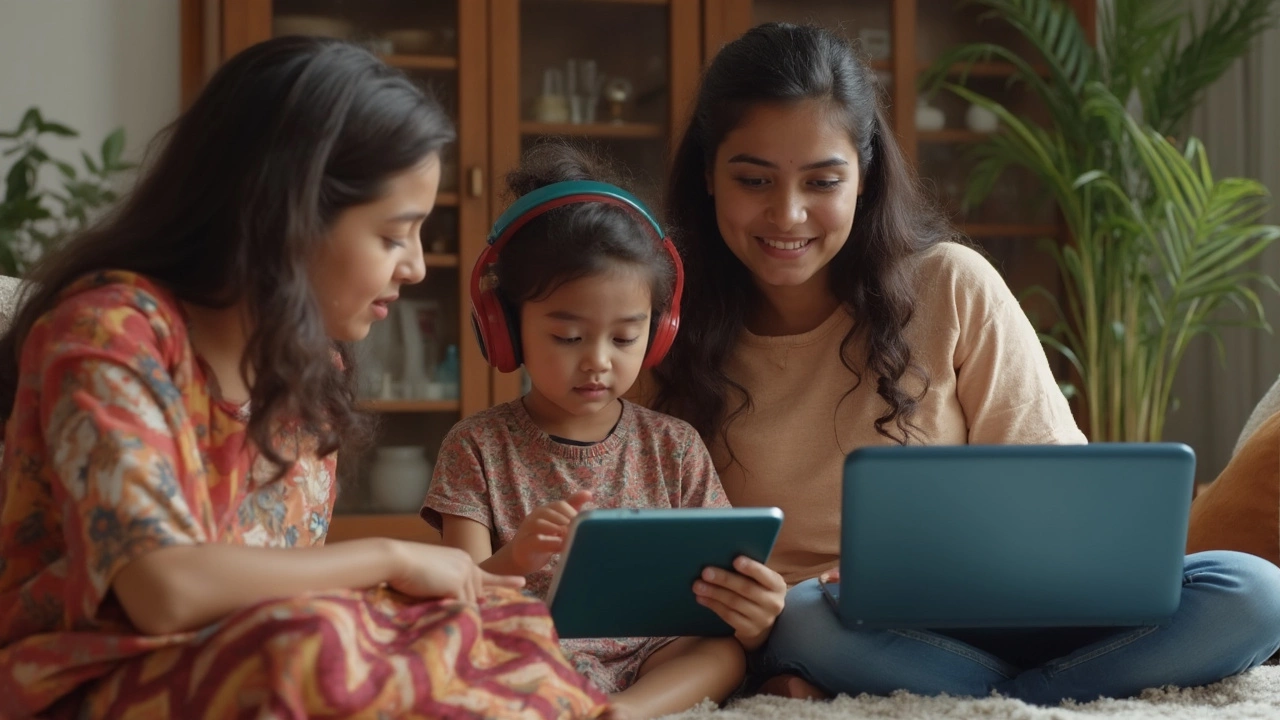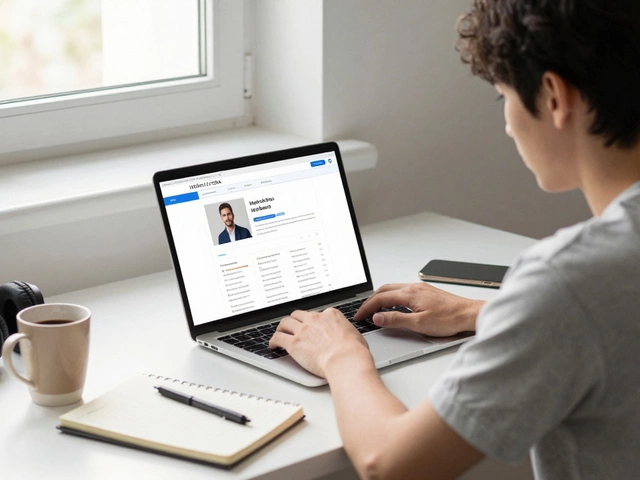Ever watched someone learn a new language just from their phone? That's eLearning in real life. Platforms like Duolingo make it super clear what eLearning actually is—a way to learn anything, anytime, anywhere, without a traditional classroom.
Instead of thick textbooks, think short, interactive lessons you can finish during a coffee break. You get instant feedback, earn rewards for progress, and can pick up where you left off no matter where you are. Millions use these platforms because they’re simple, flexible, and actually make learning fun.
If you’ve never tried it, you're missing out. eLearning isn’t about sitting through dry Zoom calls. The best examples feel more like a game than a chore, and real skills stick because you actually use them as you go.
- What Counts As eLearning?
- Real-World Example: Duolingo in Action
- Features That Make eLearning Work
- Tips to Get the Most from eLearning Platforms
What Counts As eLearning?
When folks talk about eLearning, they don’t just mean sitting in on a video lecture. eLearning is any learning experience you get through electronic tech—usually online—without someone handing you a paper or standing at the front of a class. It covers everything from interactive apps to self-paced certificate courses and even live group trainings with polls and chats.
If you’ve used YouTube to master a cooking skill, completed a LinkedIn Learning course to pick up a work trick, or tried an online driver’s ed class, you’ve used eLearning. Today’s platforms go way beyond old-school emailed assignments. Here’s what eLearning can include:
- Massive Open Online Courses (MOOCs) like Coursera or EdX
- Language apps (like Duolingo or Babbel)
- Workplace training with simulations and quizzes
- Virtual classrooms with real-time discussion and feedback
- Digital tutorials, podcasts, and how-to videos
No surprise, eLearning’s popularity exploded. During 2020, global eLearning market revenue shot up sharply, and there’s no sign of slowing down.
| Year | Global eLearning Market Size (USD) |
|---|---|
| 2019 | $200 Billion |
| 2021 | $250 Billion |
| 2025 (projected) | $375 Billion |
This shift isn’t just about convenience. eLearning saves time, money, and often gives access to way more resources and expert teachers than the average local class. It suits busy professionals, parents, or anyone just wanting to learn something new without quitting their day job. If you want flexible, on-demand, and real results—eLearning fits the bill.
Real-World Example: Duolingo in Action
If you ask anyone about an easy way to learn a language online, Duolingo is usually the first name you’ll hear. It's one of the biggest eLearning platforms out there, with over 500 million users around the world by 2025. That’s more than the population of the USA and Canada combined.
Here’s how it stands out: Instead of diving into complex grammar right away, Duolingo breaks everything into tiny, game-like lessons. You answer questions, practice speaking, and get instant feedback. If you answer correctly, you get points and keep your learning streak alive. Mess up? No worries—you’ll see where you went wrong, and you can try again right away.
What makes Duolingo genuinely useful for learners?
- eLearning platforms like Duolingo use science-backed methods called “spaced repetition.” That means you’ll keep seeing tricky words or phrases until they stick for real.
- You can squeeze in a lesson any time—standing in line, waiting for your coffee, or during your commute.
- Duolingo covers more than 40 languages, from Spanish and French to Korean and even Klingon (yes, seriously).
- The app tracks your progress, sends reminders, and matches you with people learning the same language—so you don’t feel like you’re doing it alone.
Here’s a quick look at the numbers behind Duolingo:
| Fact | Duolingo Data |
|---|---|
| Active Users (2025) | Over 75 million monthly |
| Languages Offered | 40+ |
| Average Daily Lessons per User | 1.8 |
| Most Popular Language | English |
What’s cool is how it adapts to you. If you breeze through Spanish basics, it bumps you up to harder stuff. Struggling? It slows things down and gives you extra review. It’s personalized—one of the core promises of modern eLearning platforms.
Duolingo offers free access for everyone, but there’s also a paid version that skips ads and gives you extra features. Either way, you’re in control—no schedule, no pressure, and all the support you need to actually make progress. If you’re curious what a real-life eLearning example looks like, just open the app and start tapping.

Features That Make eLearning Work
If you’ve ever wondered why eLearning sticks better than old-school classes, it comes down to a few killer features. The best online learning platforms don't just put lectures on a screen—they actually turn learning into an experience that fits real life.
First up is flexibility. You learn when you want and where you want. Whether you’re on your couch or killing time on the bus, lessons are right there on your phone or laptop. No stuffy classrooms or strict schedules.
Then, there's instant feedback. Messed up a quiz? You know right away. Most eLearning platforms auto-grade quizzes and let you retry, so you can tighten up your skills without waiting for a teacher to get around to grading stacks of paper.
The next big one is personalization. With the help of smart algorithms, apps like Duolingo and Coursera suggest lessons or content based on what you've mastered and where you’re struggling. That way, you don’t waste time repeating stuff you already know.
Engagement is huge, too. The most popular platforms use streaks, badges, leaderboards, and even games to keep you motivated. Duolingo’s daily goals and reward system are a prime example—this approach keeps users coming back, and helps learning actually stick.
Let’s be real—data matters. Platforms love sharing numbers to show how well these features work. Here’s a quick look at some stats that prove this point:
| Feature | Stat | Source |
|---|---|---|
| Gamified Learning | 34% better retention vs. traditional eLearning | TalentLMS Survey, 2023 |
| Self-Paced Modules | 60% of users finish courses they start | Coursera Data, 2024 |
| Instant Feedback | 15% faster skill improvement | EdX Research, 2022 |
So, what’s the takeaway? A top eLearning platform is designed so you actually want to keep using it. The best ones keep things simple, give you quick results, and make every lesson feel personal—no classroom awkwardness needed.
Tips to Get the Most from eLearning Platforms
Getting good at online learning isn’t just luck. It’s about knowing how to use these platforms so they actually work for you. Here’s how to make sure you’re really learning and not just clicking through screens.
- eLearning works best when you set a daily schedule. Five days a week is the sweet spot—research from the Online Learning Consortium says people who stick to a routine finish 45% more courses than those who don’t.
- Don’t skip the quizzes. Self-tests right after a lesson help your brain hang onto info way longer. A 2022 study at Stanford found quizzes boost memory by nearly 30% over just reading material.
- Try mixing things up. Watch a video, then read the summary, then do a short hands-on task. Switching formats keeps your focus and stops your mind from wandering.
- Take real breaks. Every 45-60 minutes, step away—no phone, no screens, just rest. If you keep going non-stop, you’ll actually remember less.
- If there’s a discussion board or chat, use it. Asking questions and bouncing ideas off real people makes you feel less alone and locks the info in even better.
“Interacting with both the material and other learners helps knowledge stick. The best e-learning platforms make space for active participation.” — Dr. Mary Hamilton, EdTech Researcher
Check out this quick table with some revealing stats about best practices and results:
| Tip | Completion Improvement |
|---|---|
| Planned schedule | 45% higher |
| Frequent self-tests | 30% boost in memory |
| Using discussion boards | 35% higher engagement |
If you treat e-learning like scrolling on your phone, you’ll get almost nothing out of it. But if you treat it more like a gym routine—with a plan, practice, and a bit of push—you’ll be shocked at how much you pick up.




